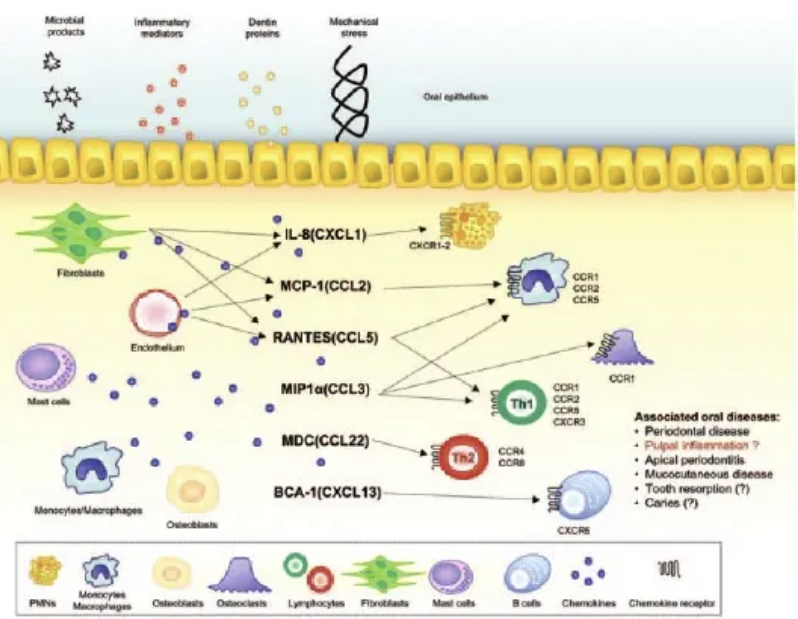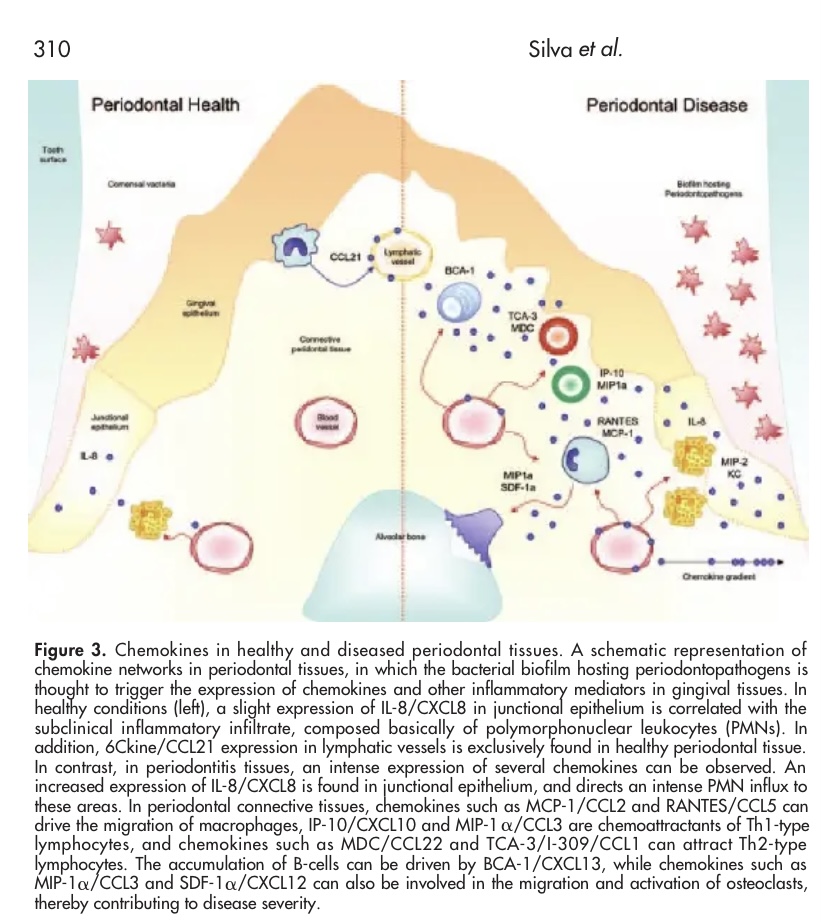(Total Views: 659)
Posted On: 12/17/2021 12:00:06 PM
Post# of 158055
I don’t know if this meets the burden of evidence to get on the Ohm master list, but thought I’d share nonetheless.
From an older paper on leukocyte recruitment in periodontal disease.
Chemokines in Oral Inflammatory Diseases: Apical Periodontitis and Periodontal Disease
https://www.academia.edu/22555444/Chemokines_...card=title


While direct costs of periodontal disease are relatively modest, indirect costs are enormous. For example, perodontal disease, as a site of chronic inflammation, is believed to be a significant contributor to heart disease.
Economic burden of periodontitis in the United States and Europe – an updated estimation
https://aap.onlinelibrary.wiley.com/doi/10.1002/JPER.21-0111
From an older paper on leukocyte recruitment in periodontal disease.
Chemokines in Oral Inflammatory Diseases: Apical Periodontitis and Periodontal Disease
https://www.academia.edu/22555444/Chemokines_...card=title


Quote:
Besides being attracted by MCP-1/CCL2, through thebinding of CCR2, macrophages can also express CCR1 andCCR5. Thus, chemokines such as RANTES/CCL5 and MIP-1/CCL3 may also be involved in the migration of macrophages to periodontal tissues (Gemmell et al., 2001).RANTES/CCL5 has been detected in both the periodontaltissue and the GCF of persons with periodontitis, and in higheramounts in active sites vs.inactive periodontitis sites (Gamonal
et al., 2000; Gemmell et al., 2001; Emingil et al., 2004).
Cellcultures of whole blood from persons with periodontitisstimulated with LPS produce higher levels of RANTES/CCL5than do cultures from control individuals. In addition, personswith periodontitis were found to continue producing high levelsof RANTES/CCL5, even after periodontal therapy, suggestingan intrinsic susceptibility of these individuals to periodontitis development (Fokkemaet al., 2003). MIP-1 /CCL3 was foundto be the most abundantly expressed chemokine in periodontitistissues, with its expression localized in the connective tissuesubjacent to the pocket epithelium of inflamed gingival tissues(Gemmell et al., 2001; Kabashima et al., 2002). It has also been shown that MIP-1 /CCL3-positive cells increase innumber with increasing severity of periodontal disease(Kabashima et al., 2002), and are associated with augmented proportions of lymphocytes in tissues with increasing inflammation (Gemmellnet al., 2001). However, MIP-1 /CCL3levels in GCF were similar in healthy and diseased sites(Gemmellnet al., 2001; Kabashima et al., 2002; Emingil et al.,2005). The receptor of RANTES/CCL5 and MIP-1 /CCL3,CCR5, was found to be exclusively expressed in diseasedtissues, mainly in cells located in connective tissue subjacent tothe pocket epithelium (Gamonal et al., 2001; Kabashima et al. ,2002). As previously described, CCR5 as well CXCR3 arecharacteristically expressed by Th1-type lymphocytes (Sallusto et al., 1998a)
While direct costs of periodontal disease are relatively modest, indirect costs are enormous. For example, perodontal disease, as a site of chronic inflammation, is believed to be a significant contributor to heart disease.
Economic burden of periodontitis in the United States and Europe – an updated estimation
https://aap.onlinelibrary.wiley.com/doi/10.1002/JPER.21-0111
Quote:
2018, the aggregate cost in the US was estimated at $3.49B and €2.52B in Europe. Indirect costs because of periodontal disease amounted to $150.57B (95% confidence interval [CI]: 103.32-189.87) in the US countries and €156.12B (95% CI: 123.72-221.86) in Europe
